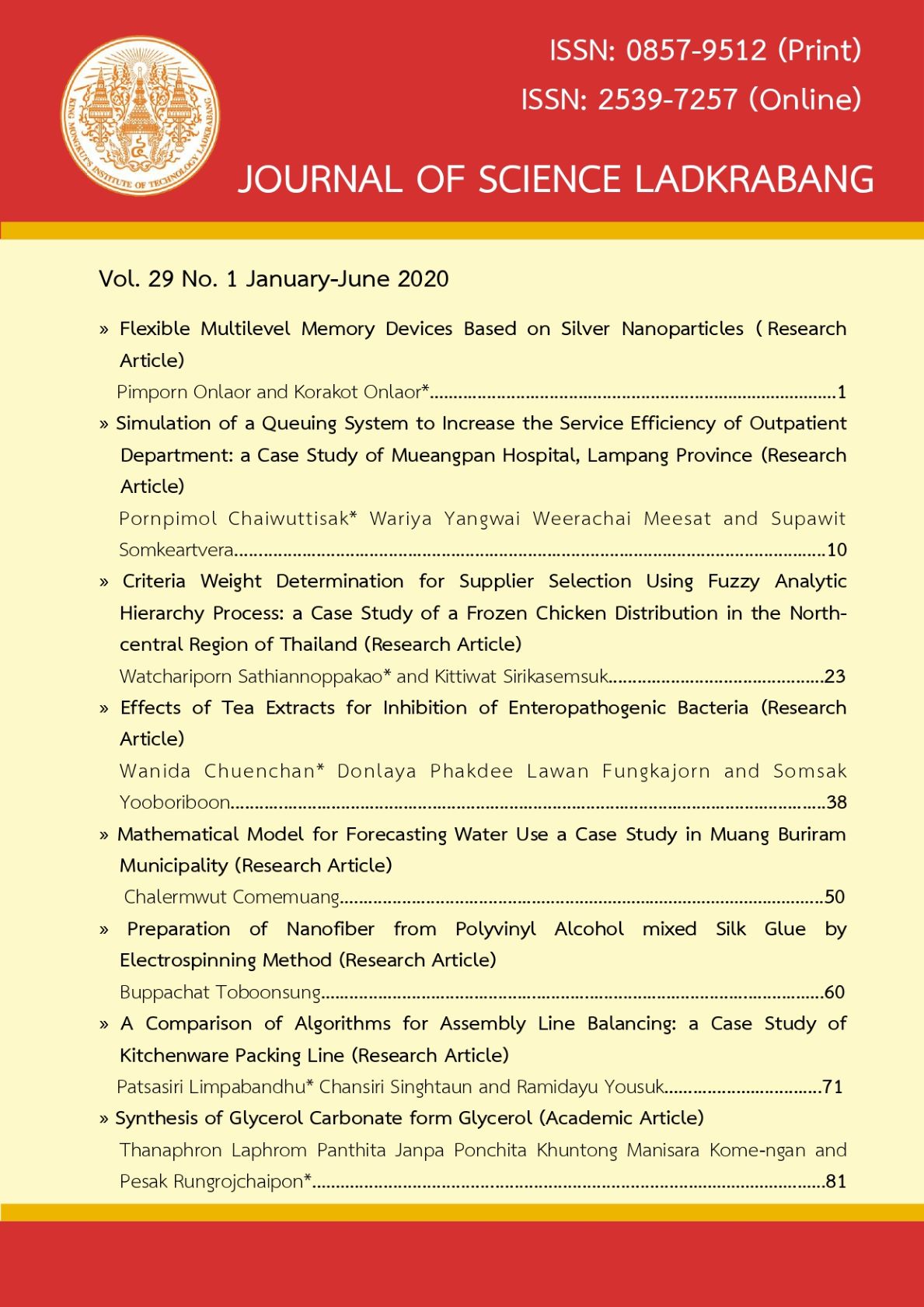A Comparison of Algorithms for Assembly Line Balancing: a Case Study of Kitchenware Packing Line
Main Article Content
Abstract
Line balancing is very important mission for manufacturing industries because they can reduce the wastage from waiting and increase production line efficiency. Balancing the production line by different methods will give different results or different line efficiency. The objective of this research is to increase kitchenware packing line efficiency by comparing line efficiency results from Branch and bound method which is exact algorithm with Comsoal method which is heuristic algorithm. The research methodology starts with studying on tasks relationships or precedence diagrams, develop the Branch and bound algorithm which is exact algorithm in Microsoft Excel spreadsheet and solve by using OpenSolver after that develop assembly line balancing mathematical model based on simple assembly line balancing problem type E which aims to reduce both of the number of work station and cycle time. Finally, Balancing the packing line by Comsoal method which is an assembly line balancing method using computer. The current packing line of case study has 69.63% of production line efficiency. From the computational results, it can be shown that the results using Branch and bound algorithm gave more line efficiency of the results than Comsoal method 3.70% and more than current line efficiency 25.16% by consuming 1 hours and 54 minutes for solving the results while Comsoal method consumed 3 seconds for solving the results therefore the suggestion for balancing the packing line in this company is balancing packing line by using exact algorithm for getting more line efficiency.
Article Details
References
Dwivedi, A. 2012. An Analysis and Development of Software for Assembly Line Balancing Problem of Manufacturing Industry. VSRD international Journal of Mechanical, Automobile & production Engineering, 2(2), 74-87.
Scholl, A. and Becker, C. 2006. A survey on problem and method in generalized assembly line balancing. European Journal of Operational Research, 168, 694-715.
Ogan, D. and Azizoglu, M. 2015. A branch and bound method for the line balancing problem in U-shaped assembly lines with equipment requirements. Journal of Manufacturing Systems, 36, 46–54.
Boysen, N., Flieder, M. and Scholl, A. 2007. A classification of assembly line balancing problems. European Journal of Operational Research, 183, 674-693.
Nai-Chieh, W. and I-Ming, C. 2011. A Solution Procedure for Type E Simple Assembly Line Balancing. Computer and Industrial Engineering, 61, 824-830.
Depuy, G.W. and Gary, E.W. 2001. A simple and effective heuristic for the resource constrained project scheduling problem. International Journal of Production Research, 39(14), 3275-3287.
Areeda, L. and Prasad, Y. 2013. Assembly line balancing the comparison of COMSOAL and MSNSH technique in Motorcycle manufacturing company. Advanced Materials Research, 166-174.
บรรหาญ ลิลา และ ณิชกุล ไชยศร. 2554. การพัฒนาเทคนิคการจัดสมดุลสายการผลิตภายใต้ข้อจํากัดขอบเขตพื้นที่และอุปกรณ์. การประชุมข่ายงานวิชาการวิศวกรรมอุตสาหการ, มหาวิทยาลัยบูรพา, ชลบุรี, 223-229. [Banhan Lila and Nichakul Chaison. 2011. The developing of production line balancing techniques under limitation of space and equipment. The Proceedings of IE Network Conference, Burapha University, Chonburi, 223-229. (in Thai)]
Eduardo, A.M. and Markus, S. 2018. A branch-and-cut algorithm for the maximum covering cycle problem. Annals of Operations Research, 284(4), 487-499.

